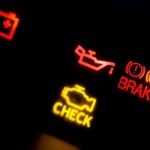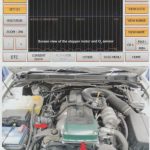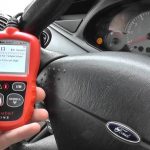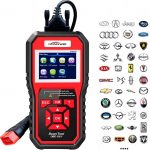OBD Codes are used by vehicles from 1996 to present. They are divided into two types: Generic or global codes, and Manufacturer-specific codes. Type 1 codes are prone to quick damage, but are not as damaging. They illuminate the MIL when the drive fails, and create a trouble code freeze frame. Type 2 codes are more minor, but still cause trouble. They can occur if your car is malfunctioning, and can lead to a costly repair.
OBD diagnostic trouble code
OBD diagnostic trouble codes are a standard way to identify a car’s problem. These codes are five characters long and represent thousands of fault codes. Comprehensive fleet management solutions provide the meaning of these codes for each driver and vehicle. Luckily, you don’t have to be a mechanic to get the information you need. These tools make locating and troubleshooting an OBD diagnostic code easy and straightforward. Listed below are the most common OBD-II codes.
This trouble code is triggered by a variety of different malfunctions in a car. Often, the problem is something as simple as a faulty air filter. If you’re wondering how to fix a car’s OBD-II trouble code, you’ll have to know what each mode means. The codes are usually listed in alphabetical order. In some cases, the trouble code will appear in two or more categories.
A diagnostic trouble code consists of a combination of five characters, each with a different meaning. In most cases, the first digit represents the type of code. For example, if a code has a 0 in the first digit, it’s an error in the engine, transmission, or driveshaft. The second digit indicates the specific system in the vehicle, while the last two digits identify the fault.
OBD codes are the most useful tool for finding the cause of a vehicle’s Check Engine Light. These diagnostic tools read and display the codes and provide information on their meanings. They also allow you to email the codes to technicians for further investigation. And if you’re in the middle of nowhere, don’t panic! With the right diagnostic tool, you’ll soon be able to determine what’s wrong with your car.
Whether your car is an OBD-II-equipped car or a J1939-compliant one, there’s a high probability that you will see this code on your vehicle. OBD diagnostic trouble codes are a common cause of a car’s malfunction, and they are an excellent way to identify a faulty vehicle before it damages your vehicle’s performance. You’ll need an OBD scanner to read these codes.
Generic or global codes
When you want to diagnose a problem in your car, you need to know the type of OBD code that your car is sending. Most cars have generic codes, but some manufacturers have their own codes. You can find these codes on your vehicle’s instrument panel, as well as in the service manual. The codes are listed below. You can use these codes to find a repair or maintenance problem in your car.
Generic codes are universal. They are assigned to any car that follows the OBD2 standard. These codes begin with a “0” for the first digit, and are adopted by most car manufacturers. They are also assigned a common fault message, which means that they are universal for most cars. Meanwhile, manufacturer-specific codes are specific to a specific car model, so they are used only by that manufacturer.
In addition to the generic codes, these diagnostics may also show data from freeze frame systems, engine malfunctions, and more. Typically, a generic scan tool is able to erase trouble codes as well. Generic scan tools should erase trouble codes when they are not useful. The quality of generic data has improved dramatically in recent years. If you are unsure of which diagnostic tool to use, read Bob Pattengale’s article on OBD II data interpretation.
If you need to know the meaning of your car’s diagnostic codes, a reliable website is crucial. Not only do they offer free software to help you diagnose your car’s problems, but they also provide a guide for your mechanic. If your car is in need of repair, OBD codes are an essential part of the job. This software is designed to make the job easier for you and your mechanic.
Manufacturer-specific codes
In the automotive industry, trouble codes are broken down into two categories: generic and manufacturer-specific. Generic codes apply to any automobile, while manufacturer-specific codes are specific to a particular make and model. A generic code starts with the number 0 and is used by all car manufacturers. Manufacturer-specific codes, on the other hand, start with a letter, such as P14CE, which is a code for the ABS (antilock braking system).
Manufacturer-specific diagnostic tools are designed to diagnose your car’s internal components and can diagnose all sorts of problems. In fact, they use proprietary protocols to communicate with all modules on a car, and can even reset the fault codes if necessary. For this reason, it is important to know how to use these tools. A professional mechanic will know how to properly use and interpret them to repair your vehicle. Here are some types of codes:
General OBD codes are the most common. These codes can be confusing for the average person, but you should understand that a manufacturer-specific code means a specific problem with the vehicle’s entire system. It does not necessarily mean that you should replace a particular part, but should instead seek further diagnosis. You should avoid purchasing auto parts from places that try to sell you the wrong part based on an incorrect diagnosis.
To understand how to interpret OBD codes, you should know what they are and what they mean. The first digit of the code will tell you whether it’s generic or manufacturer-specific. For example, the code ‘0’ is generic, while ‘1’ is manufacturer-specific. In addition to generic codes, OBD codes can also be used to diagnose issues with the engine and transmission. So, it’s imperative to understand the meaning of each manufacturer-specific code.
A P0201 code means that the injector circuit in cylinder 1 has malfunctioned. If this is the case, the problem could be caused by a faulty injector or an evaporative compressor. To find out what the problem is, you need to know what code is being displayed on the dashboard. Manufacturer-specific OBD codes are more detailed and easier to interpret than generic codes. So, before you get too frustrated, remember that you can always get the help you need!
PDTCs (predictive diagnostic trouble code)
PDTCs (predictive diagnostic error codes) are a type of diagnostic trouble code. They are associated with a malfunction in the power train control module, also known as the engine or power train. This component monitors the temperature of the engine’s coolant. It can also have problems with the vehicle’s transmission range sensor, mass air flow sensor, or intake air temperature sensor. The mechanic can troubleshoot and repair the problem.
There are two ways to interpret PDTCs. One is by using historical data to correlate specific driving archetypes with certain types of issues. For example, if someone is prone to aggressive driving, their vehicle may display DTC P0710, which signifies a possible problem with the automatic transmission fluid temperature sensor. If this problem persists, the continual variable transmission (CVT) may fail.
A vehicle may not be able to pass a Smog Check inspection if it has PDTCs. The Air Resources Board is working with vehicle manufacturers to develop solutions for the problematic vehicles. As part of the agreement, BAR will control the application of PDTCs through the Smog Check database. Vehicles that do not store PDTCs will be exempted from Smog Check inspection. An analysis by the BAR suggests that the inclusion of PDTCs in the Smog Check inspection can increase the rate of failure by less than half of one percent. Moreover, vehicles that do not store PDTCs will pass a Smog Check inspection even if they have a PDTC.
DTC prediction may also be useful for automobile manufacturers. In some cases, these predictive reports are used to make maintenance decisions. Manufacturers may use this data to offer specific services. For example, they may offer virtual inspections to their customers, allowing them to diagnose their vehicle’s condition without visiting a mechanic. This could be especially useful for customers before long journeys. It may even be possible to avoid a vehicle repair altogether.






